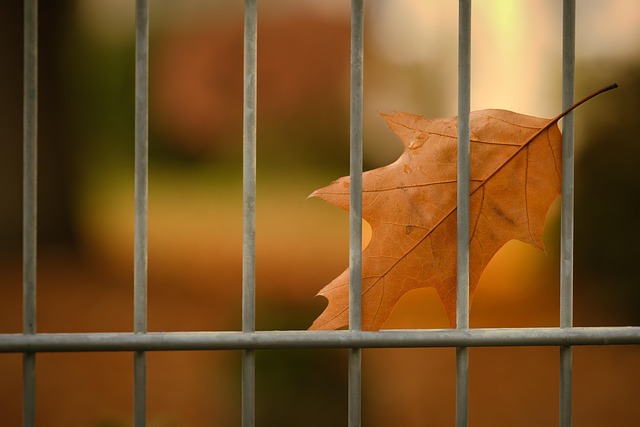DIY Fence Installation Tips for New Bedford, Massachusetts Homeowners
If you’re a homeowner in New Bedford, Massachusetts considering a DIY fence installation, this comprehensive guide is your go-to resource. From understanding the diverse fence options suited to local landscapes, to mastering the technical aspects of measurement and planning, we equip you with practical tips. Learn how to prepare your ground, install fence posts accurately, attach rails and panels efficiently, and finish with final touches that ensure longevity. Elevate your outdoor space – safely and skillfully – with these expert DIY fence installation tips tailored for New Bedford homeowners.
- Understanding Your Fence Options for New Bedford Homes
- Measuring and Planning Your Fence Layout
- Preparing the Ground for Installation
- Step-by-Step Guide to Fence Post Placement
- Attaching Rails and Panels: A Practical Approach
- Final Touches and Maintenance Tips for Longevity
Understanding Your Fence Options for New Bedford Homes
When it comes to fencing your New Bedford, Massachusetts home, there’s a variety of options to consider. The first step is understanding the types of fences suitable for your local climate and landscape. Wood remains a popular choice for its natural aesthetics and flexibility in design, but requires regular maintenance. Vinyl offers low-maintenance benefits and comes in numerous styles, while chain link provides security at a lower cost but may not be as visually appealing. Consider your property lines, the level of privacy desired, and any local regulations regarding fence height and materials before making your selection. Each option has its advantages and disadvantages, so doing your research beforehand will ensure a successful DIY installation.
Measuring and Planning Your Fence Layout
When planning a DIY fence installation, measuring and mapping out your layout is the crucial first step. Take time to walk the perimeter of your property, identifying any existing structures or landmarks that will influence the fence’s position. Mark these points with flags or spray paint for reference. Next, decide on the type of fence you want—wooden, vinyl, or chain-link—and determine its length and height based on local regulations and your personal preferences.
Use measuring tape to take precise measurements, ensuring you account for any gates or openings you plan to include. Create a simple sketch or use fencing software to visualize the layout, helping you identify potential challenges like trees, rocks, or uneven terrain. This planning phase will save you time, effort, and frustration later on in the installation process.
Preparing the Ground for Installation
Before installing your fence, preparing the ground is a crucial step. New Bedford’s soil conditions can vary, so it’s essential to assess the area where the fence will be erected. Loamy or sandy soils are typically ideal, as they provide good drainage, but if you encounter clay-like terrain, consider adding some organic matter to improve its structure and prevent waterlogging.
Leveling the ground is also vital for a successful installation. Remove any debris, rocks, or uneven patches that could disrupt the fence’s alignment. Using a level, ensure the ground is even across the intended fence line. This preparation will not only make installation easier but also guarantee your fence stands straight and strong over time.
Step-by-Step Guide to Fence Post Placement
To ensure a sturdy and level fence, careful placement of posts is crucial. Begin by identifying the desired fence line, marking it with stakes and string for guidance. Next, dig holes for each post using an auger or shovel, ensuring they are deep enough (typically around one-third to half the post’s height) and wide enough (at least 8 inches in diameter) to accommodate proper backfilling. Measure and mark the holes’ depth and distance apart according to your fence design. When digging, be mindful of any underground utilities; calling 811 for a location service before digging can help avoid potential hazards. Once all holes are dug, place a level post in each hole to ensure accuracy, then fill the spaces around the posts with compacted gravel or soil, creating a solid base.
Attaching Rails and Panels: A Practical Approach
When attaching rails and panels to your fence, start by ensuring all components are level and aligned properly. Use a level to check the horizontality of the posts and rails, then drill pilot holes for screws or nails to prevent splitting. For added stability, consider using bracket connectors at the points where rails meet posts.
Next, secure the rails to the posts using brackets, screws, or nails. Position the panels between the rails, ensuring they fit snugly with no gaps. Fasten the panels to both the rails and ground for a sturdy hold. Remember to pre-drill holes for better screw retention and minimize wood splintering.
Final Touches and Maintenance Tips for Longevity
After completing the installation, take the time to inspect your new fence thoroughly. Double-check all connections, ensuring gates open and close smoothly, and that posts are securely fastened. Apply a coat of high-quality sealant or paint to protect the wood, especially in New Bedford’s climate. This final touch will not only enhance the appearance but also safeguard against rot and decay.
Regular maintenance is key to keeping your fence in top condition. Consider a yearly inspection and reapplication of sealant to prevent moisture damage. Keep an eye out for any loose or damaged sections, fixing them promptly to maintain the structural integrity of your fence. A little regular care will ensure your DIY project stands the test of time, providing both aesthetic appeal and security for years to come.
